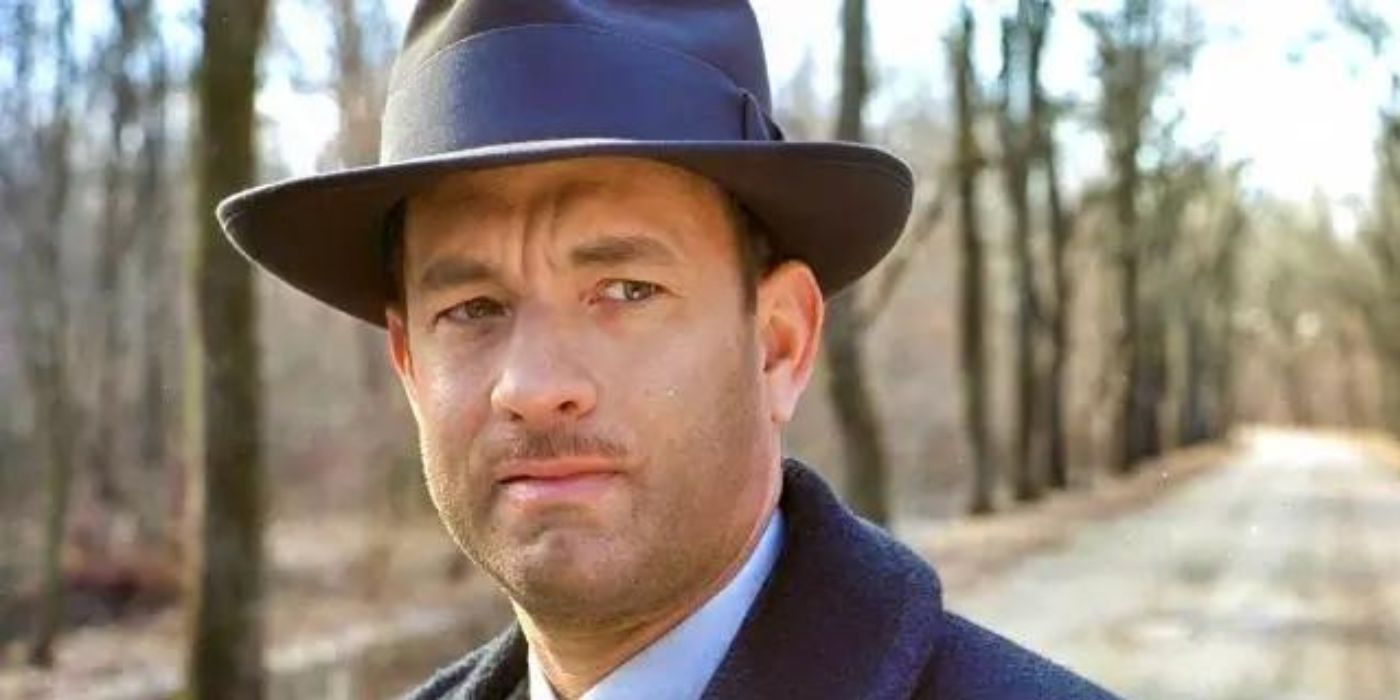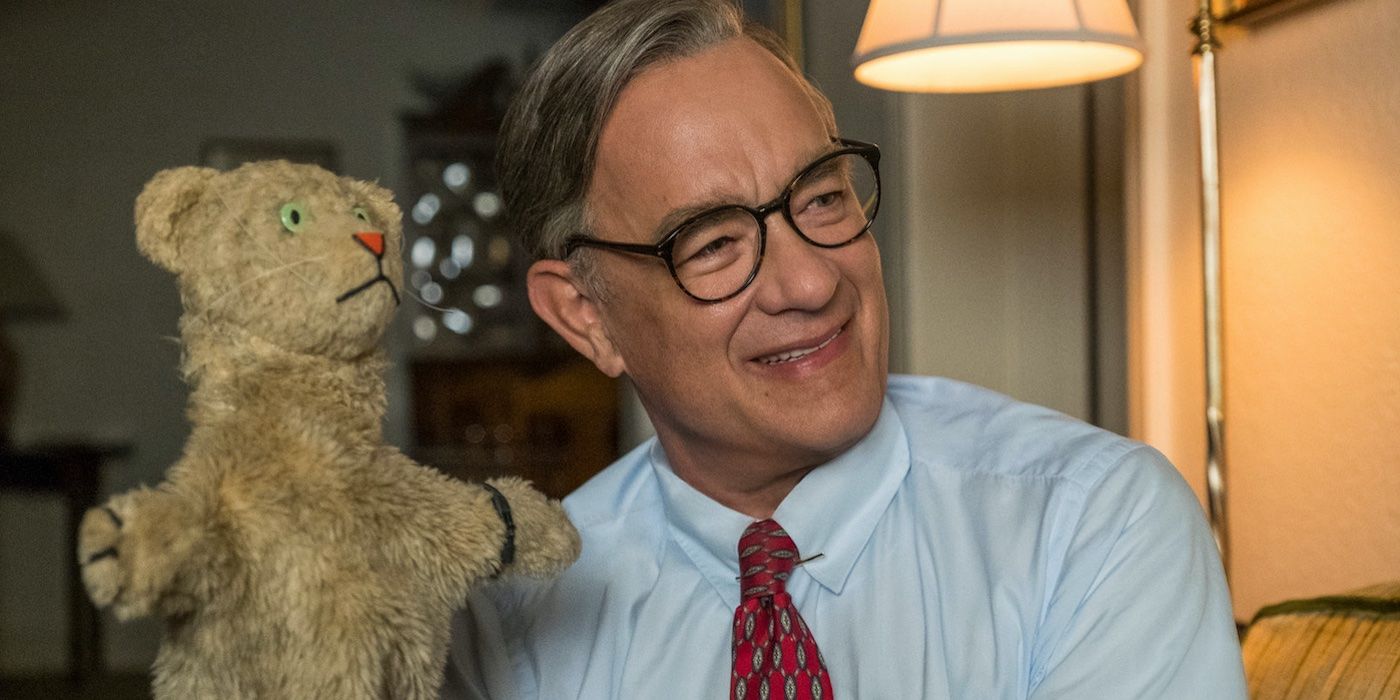The Big Picture
- The film
A Beautiful Day in the Neighborhood
accurately depicts Fred Rogers’ kind persona, with a few fictional journalistic elements added in. - Tom Junod’s story was altered for dramatic effect, but the core events surrounding Mr. Rogers are surprisingly accurate and heartfelt.
- Fred Rogers’ impact was far-reaching and sincere, leading him to testify before Congress for public television funding. His genuine nature won over skeptics.
To those of a certain generation, the title of A Beautiful Day in the Neighborhood clearly indicates what and who the film is about. Tom Hanks plays Fred Rogers, the longtime host of the beloved children’s program Mister Rogers’ Neighborhood who is interviewed by journalist, Lloyd Vogel (Matthew Rhys). Vogel, assigned by his editor to write an article about Rogers, intends to find the flaws in his wholesome persona. As he learns more about him, the piece he writes extols the virtues of a man who seems too good to be true. It’s hard not to agree with Vogel’s assessment, but no one would be blamed for having a sense of skepticism. Yet the thing about A Beautiful Day in the Neighborhood is that it is, almost unbelievably, an accurate depiction of Rogers, and the fictional parts have more to do with the journalist.
‘A Beautiful Day in the Neighborhood’s Differences Are Seen From the Start
The film’s premise of a journalist sent to interview Fred Rogers did indeed happen, but the columnist’s name is Tom Junod, not Lloyd Vogel. While it seems odd that his real name isn’t used in the movie, there’s a reason behind it. Screenwriters Micah Fitzerman-Blue and Noah Harpster had sent a draft of the script to Junod, but he asked to change the character’s name due to the difference in details between himself and his fictional self. It was a fair request, with Fitzerman-Blue and Harpster confessing that they exaggerated the conflict with his father, and added material based on their own experiences.
Those differences begin from the onset. The film starts as a fictional episode of Mister Rogers’ Neighborhood, with Rogers holding up a picture board with five doors. The first three doors are opened to reveal series regulars Lady Aberlin, King Friday, and Mr. McFeely (David Newell). Behind the fourth door is the visage of Vogel, with a black eye and a bloodied nose. We soon learn how he got those injuries when the film cuts to Vogel’s sister’s wedding reception. Vogel, his wife, and his newborn son are approached by his alcoholic father, Jerry (Chris Cooper), at the reception. Already estranged from his father, who cheated on and abandoned Vogel’s mother, Lila, when she was dying of cancer twenty years ago, Vogel is instantly inflamed when Jerry makes a joke about the now-deceased Lila. He punches his father, instigating a fistfight that turns into a chaotic brawl.
‘A Beautiful Day in the Neighborhood’ Plays Fast and Loose with Junod’s Story
It’s a great story, but wildly untrue. As Junod writes in The Atlantic, “I did not get into a fistfight with my father at my sister’s wedding. My sister didn’t have a wedding.” As for his father, the part about him being a “boozy philanderer” is accurate, but it didn’t drive the two apart. “I was well aware of his eccentricity,” Junod says, “but unlike my character in the script, I had never rejected him or his message.” The film cuts to the next day when Vogel arrives at work, shrugging off his black eye as a softball injury. Then he gets an assignment from his editor: do a 400-word profile of Mr. Rogers. The article is officially for a series on heroes, but it’s also a conscious decision made by Vogel’s editor to soften his reputation for being hard on his subjects.
2:11

Even Tom Hanks Thinks This Is His Most Underrated Movie
Hanks is surprisingly convincing as a menacing gangster, and we should be talking about it more.
The editor assigning Vogel to the story is, in fact, true, but there’s more to it. Junod had a previous reputation, and it wasn’t a good one. The cover story for the October 1997 issue of Esquire was a piece written by Junod called “Kevin Spacey Has a Secret,” a piece that outed the actor who, at the time, refused to comment about his sexuality. It led to a whirlwind of controversy, with many big names in Hollywood boycotting Junod and Esquire. So the Rogers story was indeed an effort to change the perception of Junod, he adds, “One of the editors at Esquire thought it would be amusing to have me, with my stated determination to “say the unsayable,” write about the nicest man in the world.” However, despite the fictitious aspects of his part of the story, Junod was struck by just how authentic the film portrayed his relationship with Rogers.
Tom Hanks’ Depiction of Fred Rogers is Surprisingly Accurate
Junod’s story may have been altered for dramatic purposes, but the events surrounding Rogers, as unbelievable as they may be, happened as depicted. Rogers began every morning by swimming and praying for people by name. Likewise, the disclosure that he’s a vegetarian is true, as is his rationale, often saying he “wouldn’t eat anything that had a mother.” Rogers confesses to Vogel that he has a strained relationship with his son in the film, which is also true.
The scene where Rogers tells Vogel to sit in silence for 10 seconds to think about those who loved him, stands as a poignant and impactful moment, but the film plays it smaller than what transpired in real life. When Rogers won his Lifetime Achievement Award at the 1997 Emmys, he said, “All of us have special ones who have loved us into being. Would you just take, along with me, ten seconds to think of the people who have helped you become who you are….Ten seconds of silence.” As Rogers watched the time on his watch, the crowd – soap opera stars, Hollywood executives, and more – went from nervous laughter to thoughtful silence, with many moved to tears.
‘A Beautiful Day in the Neighborhood’ Only Touches the Surface of Mister Rogers’ Impact
If you’ve seen A Beautiful Day in the Neighborhood, you’d agree that the subway singalong is the most unbelievably cheesy moment of the movie. However, it did happen. In Tom Junod’s own words:
It was late in the day, and the train was crowded with children who were going home from school. Though of all races, the schoolchildren were mostly black and Latino, and they didn’t even approach Mister Rogers and ask him for his autograph. They just sang. They sang, all at once, all together, the song he sings at the start of his program, Won’t You Be My Neighbor? and turned the clattering train into a single soft, runaway choir.
And those are the moments that made it into the film. Fred Rogers was a special man, and the friendship he developed with Junod comes across through the work of Hanks and Rhys. Throughout Mister Rogers’ Neighborhood, Fred Rogers tackled several controversial and difficult topics in a straightforward, honest, and gentle fashion that only he could.
The success of his beloved persona eventually translated into real life when he successfully testified before Congress to fund $20 million for public television. It was Rogers, and Rogers alone, appealing for the additional funding, speaking to Congress in the same calm demeanor that endeared him to children nationwide. It didn’t take long before he won over Senate committee chair John Pastore, a self-professed “pretty tough guy,” A moment that should speak volumes to anyone skeptical of who Fred Rogers truly is.
A Beautiful Day in the Neighborhood is streaming on Apple TV+ in the U.S.


